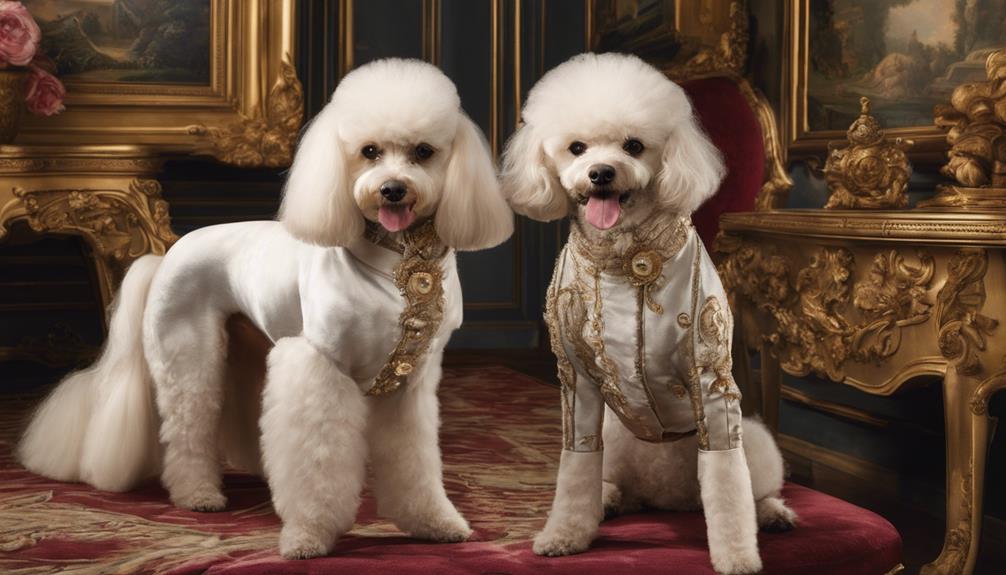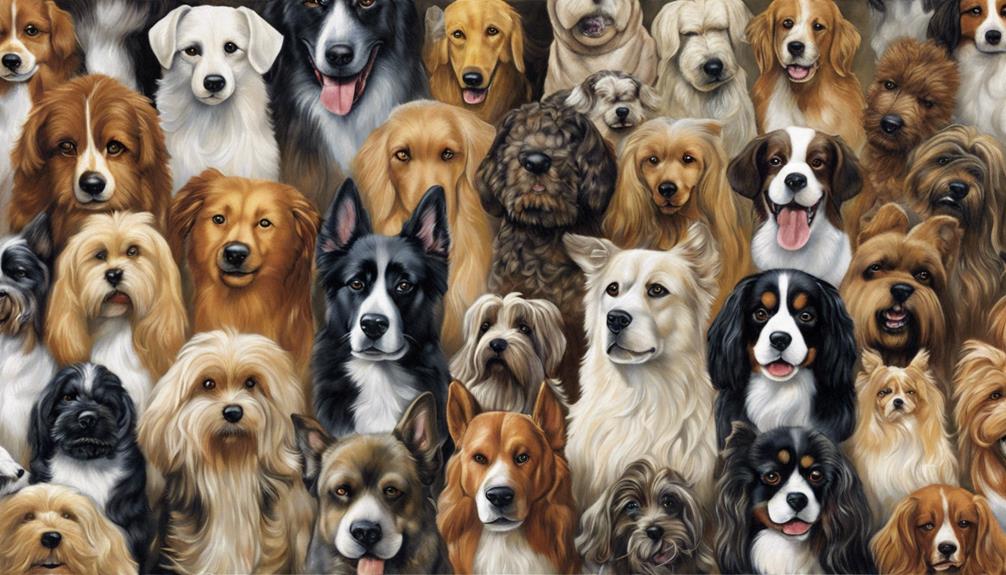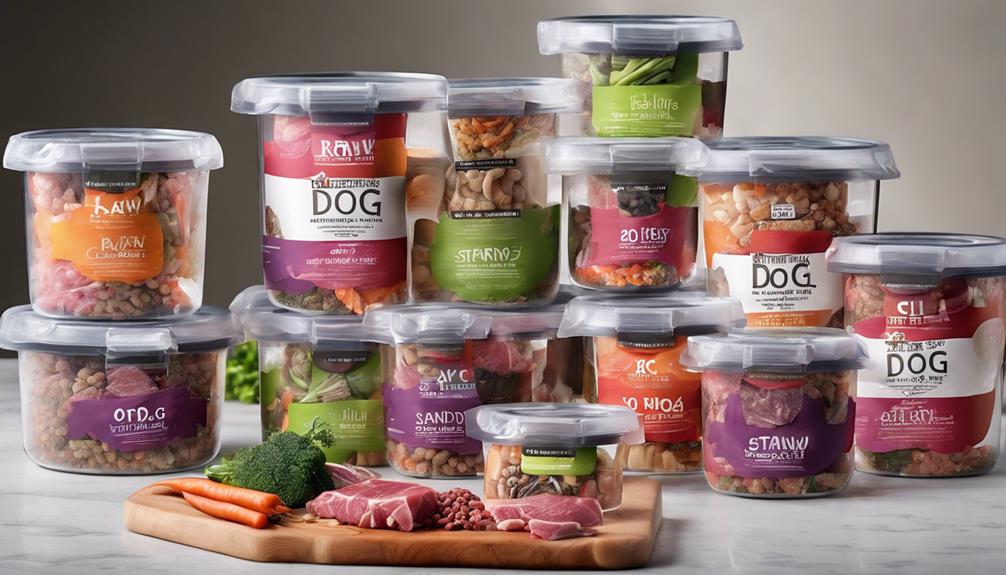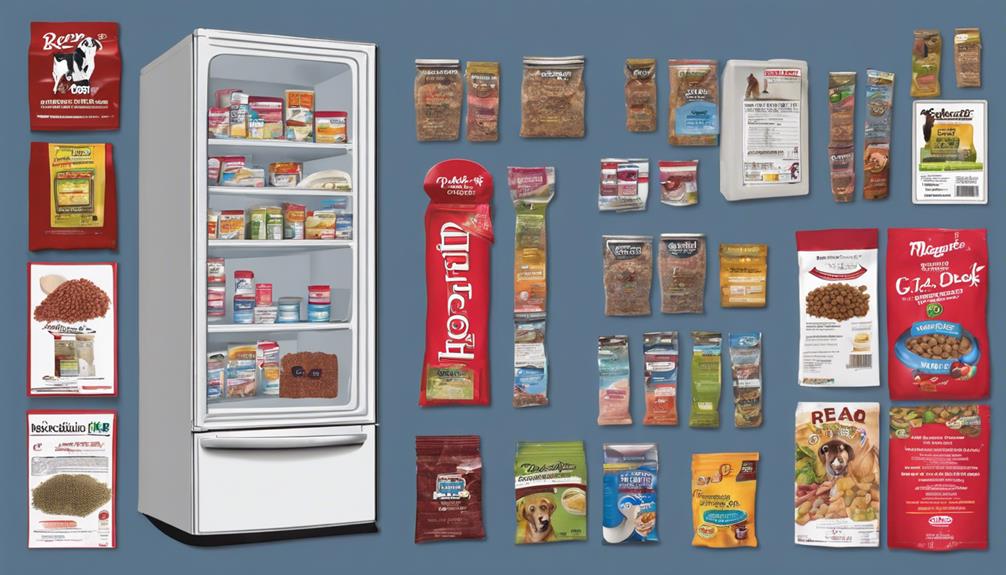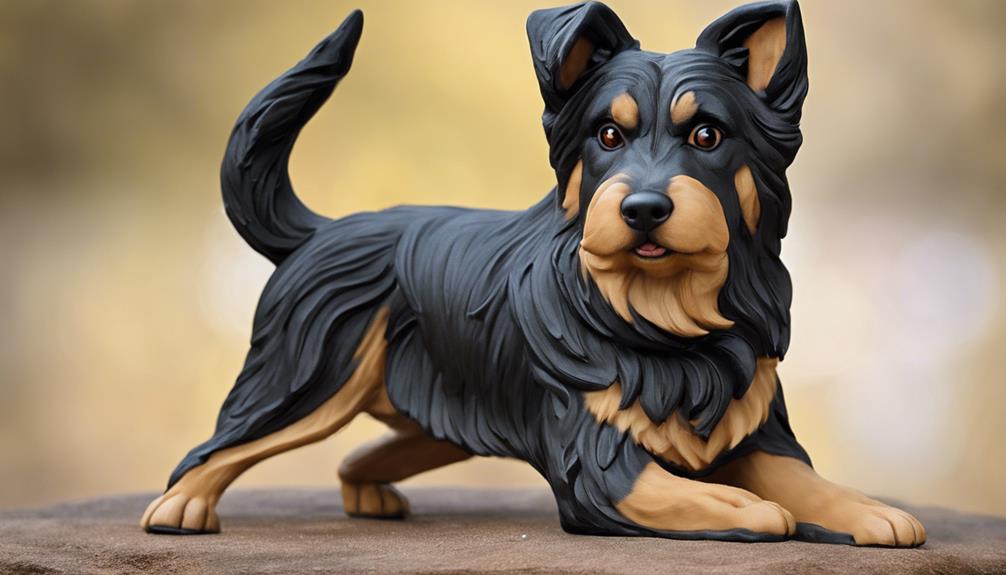Uncovering the Poodle's name origins traces back to Germany's hunting legacy. 'Poodle' stems from 'Pudel,' meaning water splasher. Poodles excelled as water retrievers for hunters. Their heritage showcases a love for water activities. The breed's evolution birthed Standard, Miniature, and Toy sizes. Traits like intelligence and adaptability define Poodles. From nobility's companions to versatile roles, Poodles carved a unique place in history. Standard Poodles boast agility and brains. Their curly coats evolved for water insulation. Poodles' past offers a rich tapestry of skills. Further exploration reveals more about their fascinating journey.
Key Takeaways
- Originates from German word 'Pudel' meaning 'to splash in water'.
- Tied to Germany's hunting and fishing traditions.
- Reflects Poodles' role as skilled water retrievers.
- Etymology highlights water-loving retriever characteristics.
- Name showcases Poodles' historical connection to water activities.
Poodle Origins and Ancestry
Pondering the roots of the Poodle breed reveals a fascinating history intertwined with Germany's hunting and fishing traditions. The name 'Poodle' originates from the German word 'Pudel,' which translates to 'to splash in water.' This moniker perfectly encapsulates the breed's role as skilled water retrievers.
Originally bred in Germany, Poodles served as invaluable companions to hunters and fishermen, showcasing their exceptional abilities in water-related tasks. Their name not only signifies their ancestral connection to water activities but also highlights their historical role as proficient hunting dogs.
The etymology of 'Poodle' sheds light on the breed's origins as water-loving retrievers, showcasing their versatility and intelligence. As we explore the lineage of Poodles, we uncover a rich tapestry of heritage that intertwines with the essence of hunting and the allure of the water, shaping this breed into the beloved companions we're familiar with today.
The Evolution of Poodle Breeds
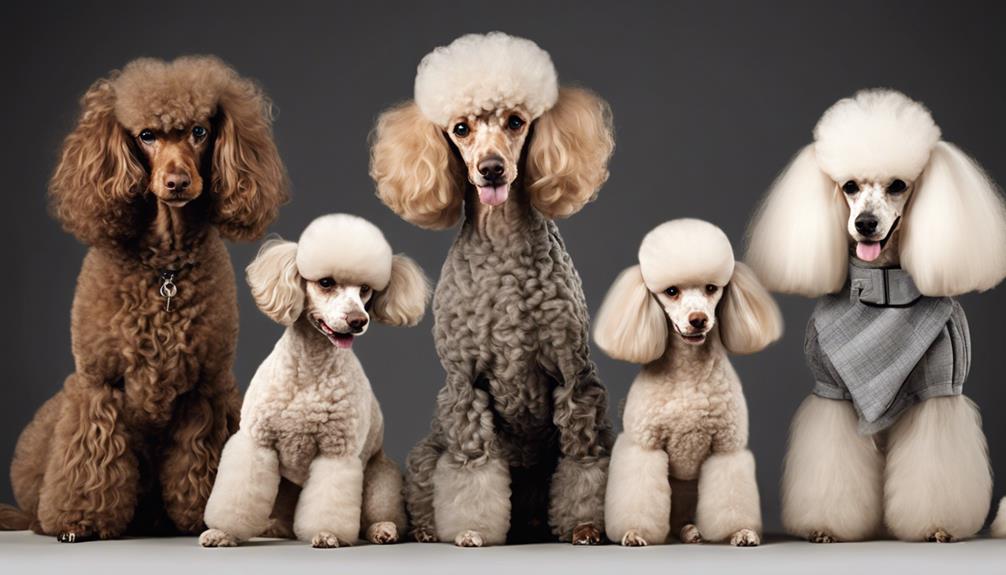
Poodles have undergone significant changes over the years, with early types evolving into the diverse variations seen today.
From the Standard to the Miniature and Toy sizes, each was bred with specific traits in mind.
The breeding process has refined characteristics like coat texture and size, shaping Poodles into the beloved breeds familiar to us today.
Early Poodle Types
Originating from distinct sizes with specific roles, early Poodle types, including Standards, Miniatures, and Toys, showcased their versatility and adaptability in fulfilling various tasks. Standard Poodles, bred for water retrieval, exhibited intelligence and elegance while excelling in their purpose.
Miniature Poodles, initially utilized for truffle hunting, demonstrated adaptability in diverse environments. Toy Poodles, developed for companionship and entertainment, evolved to suit urban lifestyles with their compact size and charming demeanor.
The evolution of these Poodle breeds highlighted their hallmark traits of intelligence, elegance, and adaptability, setting a strong foundation for the modern variations we see today. The distinct sizes and purposes of these early Poodle types laid the groundwork for the breed's enduring popularity and diverse capabilities.
Modern Breed Variations
After showcasing their versatility and adaptability in fulfilling various tasks, early Poodle types paved the way for the evolution of modern breed variations.
- The Standard Poodle, known for its intelligence and athleticism, excels as a water retriever, staying true to its origins as a hunting companion.
- The Miniature Poodle, initially bred for truffle hunting, demonstrates the breed's ability to adapt to different roles, showcasing its versatility.
- Toy Poodles, developed for companionship and entertainment purposes, highlight the breed's adaptability to fulfilling roles beyond traditional working functions.
These variations in Poodle breeds reflect their diverse capabilities and the evolution of the breed to suit different lifestyles and preferences.
Breeding for Traits
Our focus in breeding for traits led to the evolution of Poodle breeds, emphasizing specific characteristics like intelligence, obedience, and hypoallergenic coats. Through selective breeding, we aimed to enhance desirable traits while maintaining the Poodle's elegant appearance and curly coat.
This meticulous approach allowed us to develop Poodles suitable for diverse roles beyond hunting, including companionship, service work, and show competitions. Variations in size, such as Standard, Miniature, and Toy, were created to cater to different needs, showcasing the breed's versatility and evolution.
Poodles have evolved from their original hunting roles to excel in various tasks, highlighting their intelligence and adaptability in fulfilling a range of functions.
Poodles: From Past to Present
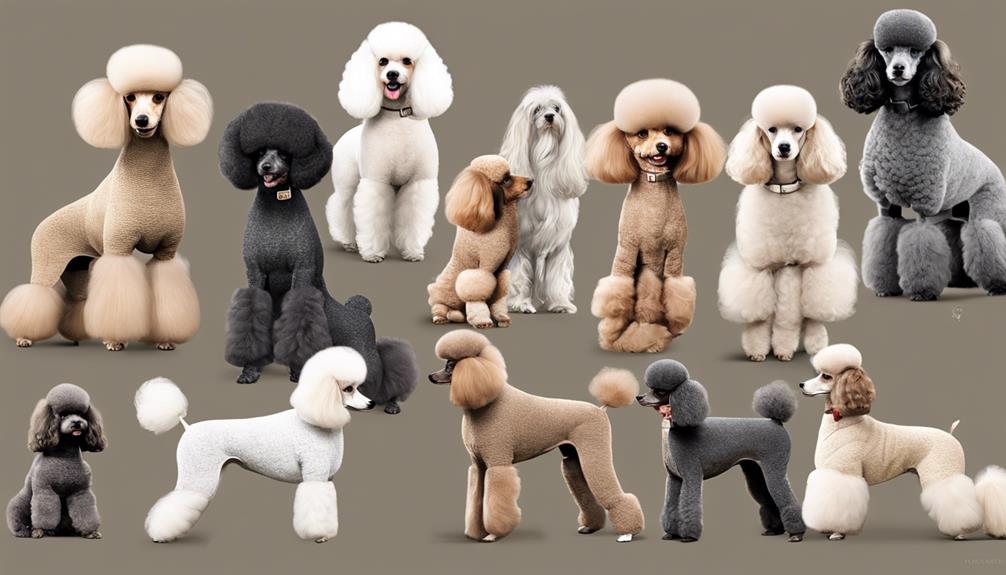
Poodles have a rich history that dates back to their origins as skilled water retrievers. From their humble beginnings as hunting dogs, Poodles transformed into beloved companions of European nobility.
As we investigate the journey of Poodles from the past to the present, we'll explore the evolution of Poodle breeds, the growth of their popularity, and the notable individuals who've been proud owners of these elegant dogs.
Evolution of Poodle Breeds
As Poodle breeds evolved over time, they adapted to varying lifestyles and purposes, resulting in distinct sizes and characteristics.
- Standard Poodles were originally bred as water retrievers and working dogs, showcasing their intelligence and versatility.
- The development of Miniature and Toy Poodles catered to the need for smaller companions and show dogs, fitting well into urban environments.
- The distinctive coat of Poodles, initially practical for protection in water, evolved into a fashion statement, adding to their charm and elegance.
Poodles have a rich history of breeds development, shifting from their role as working dogs to beloved companions and show dogs, all while maintaining their unique characteristics and versatility among dog breeds.
Poodle Popularity Growth
Poodle popularity has consistently grown over time, reflecting their adaptability and appeal across different lifestyles and social statuses. The surge in popularity during the 19th century marked a significant shift for Poodles, evolving from hunting roles to cherished companions. Their association with French nobility catapulted them into favor among European royalty, showcasing their versatile and intelligent nature.
Poodles further solidified their place by excelling as service and therapy dogs, meeting various needs with grace. The introduction of Miniature and Toy Poodles tailored to urban lifestyles enhanced their appeal, while their success as show dogs added to their enduring popularity and recognition. This journey from functional roles to beloved pets highlights the Poodles' ability to captivate hearts and minds across generations.
Famous Poodle Owners
During various historical periods, eminent figures across different fields have embraced the companionship of these elegant canines.
- Queen Elizabeth I: The famous English monarch was a proud Poodle owner, illustrating the breed's popularity among royalty.
- Pablo Picasso: The renowned artist cherished his Poodle named Lump, showcasing the breed's appeal to creative individuals.
- Jackie Kennedy: The former First Lady of the United States had a Poodle named Gaullie, reflecting the breed's presence in high-profile circles.
These famous individuals, including entertainers like Barbra Streisand with her beloved Poodle Samantha, and the late comedian Robin Williams with his Poodle Leonard, demonstrate the enduring allure of Poodles in the lives of celebrities and high-profile personalities.
Poodle Historical Significance
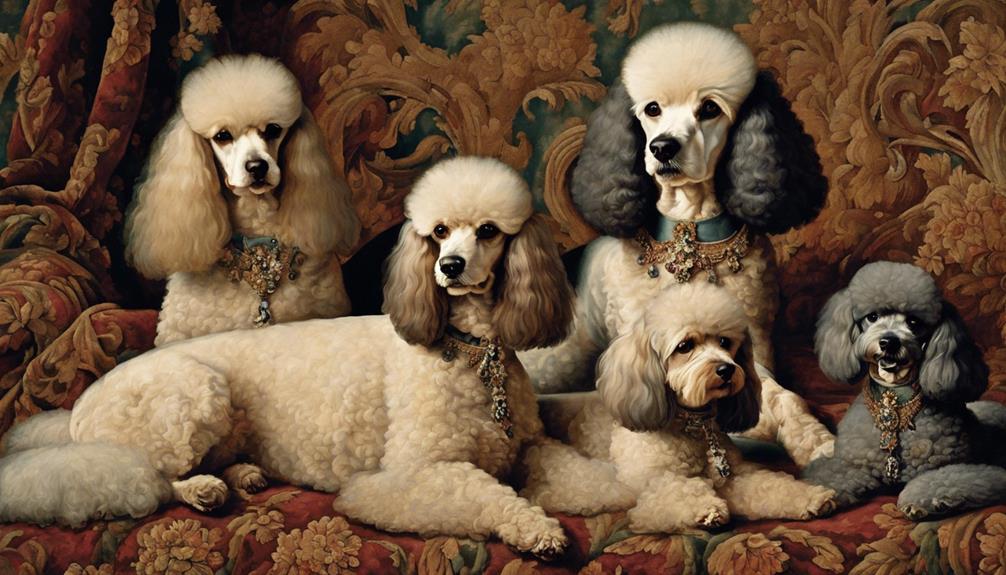
Initially bred in Germany for their exceptional swimming skills and curly coat, the Poodle holds a significant place in history as a skilled water retriever. The breed's history is deeply rooted in its ability to aid hunters and fishermen with retrieving game from water. Poodles, often referred to as the "Standard Poodles" back in history, were highly known for their intelligence, agility, and adaptability in various terrains. Their curly coat served a practical purpose in protecting them from the cold waters during their retrieval tasks. The breeding of Poodles over time has resulted in different sizes, such as Standard, Miniature, and Toy, each serving various roles but still carrying the legacy of their water retrieving ancestors. Below is a table summarizing the historical significance of Poodles:
| Trait | Historical Significance |
|---|---|
| Swimming Skills | Exceptional abilities as water retrievers |
| Curly Coat | Protection in cold waters |
| Intelligence | Adaptability in different terrains |
Poodles Role in Society
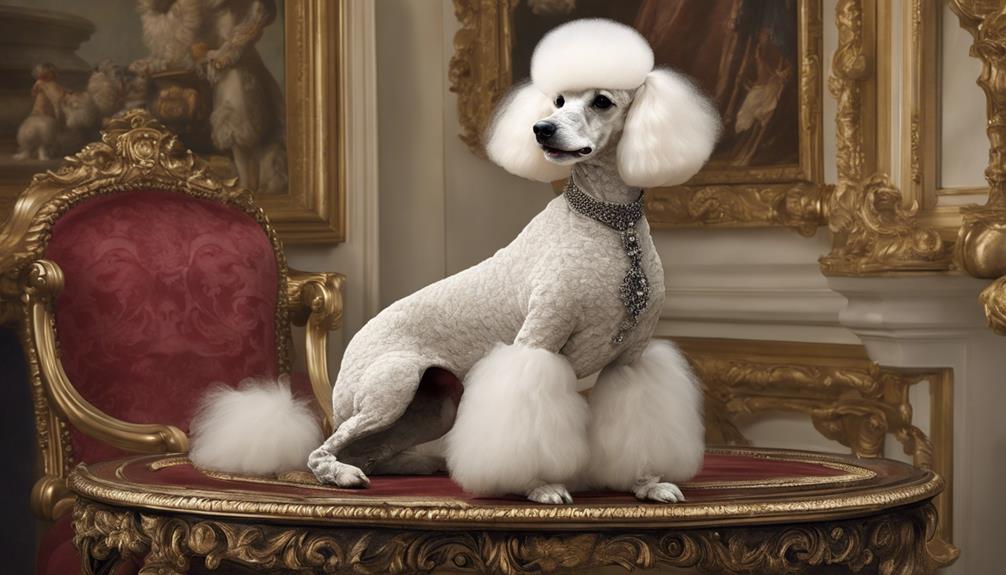
Having evolved from their origins as skilled water retrievers, Poodles have shifted from being hunting dogs to cherished companions for European nobility, highlighting their loyalty and affectionate nature. Their ability to form strong bonds with humans has endeared them to many as loving household pets.
Poodles excel in various service roles, such as therapy work, due to their hypoallergenic coat and gentle demeanor. Their adaptability and obedience make them well-suited for supporting individuals in need, showcasing their versatility in aiding others.
Poodles are known for their prowess in obedience and agility activities, participating in dog sports that demonstrate their intelligence and quick learning abilities. Their capability to excel in these areas underscores their versatility and adaptability in various competitive settings.
Genetic Health Concerns in Poodles

To address genetic health concerns in Poodles, responsible breeding practices and regular health screenings are essential for minimizing risks and ensuring the well-being of these beloved companions. Poodles are prone to genetic diseases such as hip dysplasia, bloat, dental issues, patellar luxation, and eye disorders. By prioritizing responsible breeding and conducting thorough health screenings, owners can proactively manage these potential health issues.
Veterinary check-ups play an important role in early detection and treatment of genetic predispositions in Poodles, helping to maintain their overall health and quality of life. Understanding the specific genetic predispositions of Poodles empowers owners to provide appropriate care and monitor their furry friends effectively.
Poodles in Popular Culture
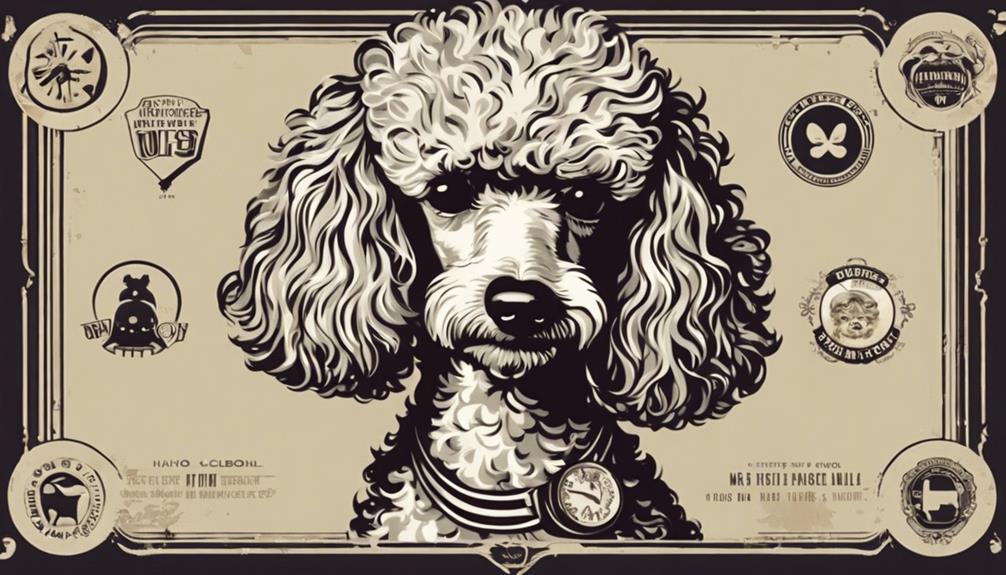
Poodles have left a paw print in popular culture through their elegant presence and intelligent charm, enchanting audiences across various media platforms.
- Famous poodles like Lady from Lady and the Tramp have become iconic figures, showcasing the breed's endearing qualities and charming personalities on the big screen.
- Rufus from Legally Blonde is another beloved poodle character that has solidified the breed's reputation as sophisticated and intelligent companions in popular films.
- Poodles' frequent appearances in TV shows and commercials highlight their versatility as performers and their ability to connect with audiences through their elegant demeanor and graceful movements.
These portrayals reflect the breed's enduring appeal, as poodles are often depicted as intelligent, loyal, and charming creatures that effortlessly capture the hearts of viewers. Whether gracing the silver screen or adding flair to a commercial, poodles continue to shine as elegant and sophisticated characters in popular culture, showcasing their unique blend of grace and intelligence.
Frequently Asked Questions
What Was the Origin of the Poodle?
It is understood that the Poodle originated in Germany in the 15th century. The name 'Poodle' comes from 'Pudel,' meaning 'to splash in water.' Originally bred as water retrievers, Poodles evolved into noble companions and show dogs, highlighting their versatile nature.
What Is the Ancestor of Poodles?
We believe the ancestor of Poodles is the German water retriever, known as Pudel in German. Poodles' ancestors excelled at water retrieval for hunters and fishermen in Germany, showcasing their curly coats and webbed feet.
What Is the History of Poodles Hunting?
Poodles' history in hunting reflects their exceptional skills in water retrieval. Their curly coats and webbed feet made them adept at fetching game during hunts. Their hunting prowess influenced their evolution into beloved companions known for their adaptability and versatility.
What Is the History of the Toy Poodle?
Oh, the history of the Toy Poodle? Let's delve in! These tiny wonders were originally bred for companionship among nobility, packing intelligence and charm in their small frames. They've since become cherished family members, excelling in diverse activities.
Conclusion
To sum up, the poodle's name has a captivating history that dates back centuries. From its origins as a skilled water retriever to its modern-day status as a beloved companion, the poodle breed has certainly left its mark on society.
Despite genetic health concerns, poodles continue to be popular pets and icons in popular culture. So next time you see a poodle prancing down the street, remember the rich history behind this iconic breed.
